Crab
Crabs are decapod crustaceans of the infraorder Brachyura, which typically have a very short projecting "tail" (abdomen) (Greek: βραχύς, romanized: brachys = short,[2] οὐρά / οura = tail[3]), usually hidden entirely under the thorax. They live in all the world's oceans, in fresh water, and on land, are generally covered with a thick exoskeleton and have a single pair of pincers. Many other animals with similar names – such as hermit crabs, king crabs, porcelain crabs, horseshoe crabs, and crab lice – are not true crabs.
| Crab | |
|---|---|
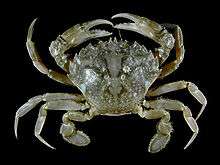 | |
| Grey swimming crab Liocarcinus vernalis | |
| Scientific classification | |
| Kingdom: | Animalia |
| Phylum: | Arthropoda |
| Subphylum: | Crustacea |
| Class: | Malacostraca |
| Order: | Decapoda |
| Suborder: | Pleocyemata |
| Infraorder: | Brachyura Linnaeus, 1758 |
| Sections and subsections[1] | |
| |
Description
.jpg)
Crabs are generally covered with a thick exoskeleton, composed primarily of highly mineralized chitin,[4][5] and armed with a single pair of chelae (claws). Crabs are found in all of the world's oceans, while many crabs live in fresh water and on land, particularly in tropical regions. Crabs vary in size from the pea crab, a few millimeters wide, to the Japanese spider crab, with a leg span of up to 4 metres (13 ft).[6]
Environment
About 850 species are saltwater crabs, brackish water crabs, freshwater crabs, terrestrial crabs or semi-terrestrial crabs.[7]
They are found throughout the world's tropical and semi-tropical regions. They were previously thought to be a monophyletic group, but are now believed to represent at least two distinct lineages, one in the Old World and one in the New World.[8]
Evolution
The earliest unambiguous crab fossils date from the Jurassic,[9] although Carboniferous Imocaris, known only from its carapace, may be a primitive crab.[10] The radiation of crabs in the Cretaceous and afterward may be linked either to the break-up of Gondwana or to the concurrent radiation of bony fish, crabs' main predators.[11]
Sexual dimorphism
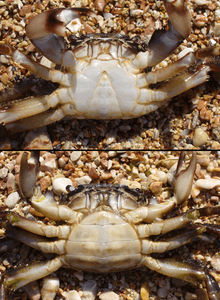
Crabs often show marked sexual dimorphism. Males often have larger claws,[12] a tendency which is particularly pronounced in the fiddler crabs of the genus Uca (Ocypodidae). In fiddler crabs, males have one claw which is greatly enlarged and which is used for communication, particularly for attracting a mate.[13] Another conspicuous difference is the form of the pleon (abdomen); in most male crabs, this is narrow and triangular in form, while females have a broader, rounded abdomen.[14] This is because female crabs brood fertilised eggs on their pleopods.
Reproduction and lifecycle
_on_Istrian_coast_(Adriatic_sea).jpg)
Crabs attract a mate through chemical (pheromones), visual, acoustic, or vibratory means. Pheromones are used by most fully aquatic crabs, while terrestrial and semiterrestrial crabs often use visual signals, such as fiddler crab males waving their large claws to attract females. The vast number of brachyuran crabs have internal fertilisation and mate belly-to-belly. For many aquatic species, mating takes place just after the female has moulted and is still soft. Females can store the sperm for a long time before using it to fertilise their eggs. When fertilisation has taken place, the eggs are released onto the female's abdomen, below the tail flap, secured with a sticky material. In this location, they are protected during embryonic development. Females carrying eggs are called "berried" since the eggs resemble round berries.
When development is complete, the female releases the newly hatched larvae into the water, where they are part of the plankton. The release is often timed with the tides. The free-swimming tiny zoea larvae can float and take advantage of water currents. They have a spine, which probably reduces the rate of predation by larger animals. The zoea of most species must find food, but some crabs provide enough yolk in the eggs that the larval stages can continue to live off the yolk.
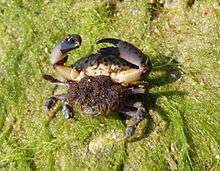
Each species has a particular number of zoeal stages, separated by moults, before they change into a megalopa stage, which resembles an adult crab, except for having the abdomen (tail) sticking out behind. After one more moult, the crab is a juvenile, living on the bottom rather than floating in the water. This last moult, from megalopa to juvenile, is critical, and it must take place in a habitat that is suitable for the juvenile to survive.[15]:63–77
Most species of terrestrial crabs must migrate down to the ocean to release their larvae; in some cases, this entails very extensive migrations. After living for a short time as larvae in the ocean, the juveniles must do this migration in reverse. In many tropical areas with land crabs, these migrations often result in considerable roadkill of migrating crabs.[15]:113–114
Once crabs have become juveniles, they will still have to keep moulting many more times to become adults. They are covered with a hard shell, which would otherwise prevent growth. The moult cycle is coordinated by hormones. When preparing for moult, the old shell is softened and partly eroded away, while the rudimentary beginnings of a new shell form under it. At the time of moulting, the crab takes in a lot of water to expand and crack open the old shell at a line of weakness along the back edge of the carapace. The crab must then extract all of itself – including its legs, mouthparts, eyestalks, and even the lining of the front and back of the digestive tract – from the old shell. This is a difficult process that takes many hours, and if a crab gets stuck, it will die. After freeing itself from the old shell (now called an exuvia), the crab is extremely soft and hides until its new shell has hardened. While the new shell is still soft, the crab can expand it to make room for future growth.[15]:78–79
Behaviour
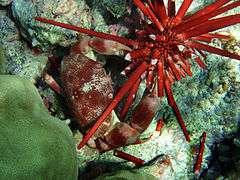
Crabs typically walk sideways[16] (a behaviour which gives us the word crabwise), because of the articulation of the legs which makes a sidelong gait more efficient.[17] However, some crabs walk forwards or backwards, including raninids,[18] Libinia emarginata[19] and Mictyris platycheles.[16] Some crabs, notably the Portunidae and Matutidae, are also capable of swimming,[20] the Portunidae especially so as their last pair of walking legs is flattened into swimming paddles.[15]:96
Crabs are mostly active animals with complex behaviour patterns. They can communicate by drumming or waving their pincers. Crabs tend to be aggressive towards one another, and males often fight to gain access to females.[21] On rocky seashores, where nearly all caves and crevices are occupied, crabs may also fight over hiding holes.[22] Fiddler crabs (genus Uca) dig burrows in sand or mud, which they use for resting, hiding, and mating, and to defend against intruders.[15]:28–29, 99
Crabs are omnivores, feeding primarily on algae,[23] and taking any other food, including molluscs, worms, other crustaceans, fungi, bacteria and detritus, depending on their availability and the crab species. For many crabs, a mixed diet of plant and animal matter results in the fastest growth and greatest fitness.[24][25] However, some species are more specialised in their diets. Some eat plankton, some eat primarily shellfish like clams, and some even catch fish.[15]:85
Crabs are known to work together to provide food and protection for their family, and during mating season to find a comfortable spot for the female to release her eggs.[26]
Human consumption
Fisheries
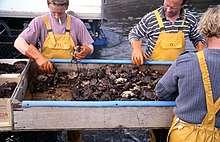
Crabs make up 20% of all marine crustaceans caught, farmed, and consumed worldwide, amounting to 1.5 million tonnes annually. One species, Portunus trituberculatus, accounts for one-fifth of that total. Other commercially important taxa include Portunus pelagicus, several species in the genus Chionoecetes, the blue crab (Callinectes sapidus), Charybdis spp., Cancer pagurus, the Dungeness crab (Metacarcinus magister), and Scylla serrata, each of which yields more than 20,000 tonnes annually.[27]
In some crab species, meat is harvested by manually twisting and pulling off one or both claws and returning the live crab to the water in the belief the crab will survive and regenerate the claws.[28][29][30]
Cookery
Crabs are prepared and eaten as a dish in many different ways all over the world. Some species are eaten whole, including the shell, such as soft-shell crab; with other species, just the claws or legs are eaten. The latter is particularly common for larger crabs, such as the snow crab. In many cultures the roe of the female crab is also eaten, which usually appears orange or yellow in fertile crabs. This is popular in southeast Asian cultures, some Mediterranean and northern European cultures, as well as on the eastern, Chesapeake and southern coasts of the United States.
In some regions, spices improve the culinary experience. In Southeast Asia and the Indosphere, masala crab and chilli crab are examples of heavily spiced dishes. In the Chesapeake Bay region, blue crab is often steamed with Old Bay Seasoning. Alaskan king crab or snow crab legs are usually simply boiled and served with garlic or lemon butter.
For the British dish dressed crab, the crab meat is extracted and placed inside the hard shell. One American way to prepare crab meat is by extracting it and adding varying amounts of binders, such as egg white, cracker meal, mayonnaise or mustard, creating a crab cake. Crabs can also be made into a bisque, a global dish of French origin which in its authentic form includes in the broth the pulverized shells of the shellfish from which it is made.
Imitation crab, also called surimi, is made from minced fish meat that is crafted and colored to resemble crab meat. While it is sometimes disdained among some elements of the culinary industry as an unacceptably low-quality substitute for real crab, this does not hinder its popularity, especially as a sushi ingredient in Japan and South Korea, and in home cooking, where cost is often a chief concern.[31] Indeed, surimi is an important source of protein in most East and Southeast Asian cultures, appearing in staple ingredients such as fish balls and fish cake.
Pain
Crabs are often boiled alive. In 2005, Norwegian scientists concluded that crustaceans could not feel pain.[32] However, a study by Bob Elwood and Mirjam Appel of Queens University in Belfast, found that hermit crabs reacted to electric shocks. This may indicate that some crustaceans are able to feel and remember pain.[33][34]
Classification
The infraorder Brachyura contains 6,793 species in 93 families,[20] as many as the remainder of the Decapoda.[35] The evolution of crabs is characterised by an increasingly robust body, and a reduction in the abdomen. Although many other groups have undergone similar processes, carcinisation is most advanced in crabs. The telson is no longer functional in crabs, and the uropods are absent, having probably evolved into small devices for holding the reduced abdomen tight against the sternum.
In most decapods, the gonopores (sexual openings) are found on the legs. However, since crabs use the first two pairs of pleopods (abdominal appendages) for sperm transfer, this arrangement has changed. As the male abdomen evolved into a slimmer shape, the gonopores have moved towards the midline, away from the legs, and onto the sternum.[36] A similar change occurred, independently, with the female gonopores. The movement of the female gonopore to the sternum defines the clade Eubrachyura, and the later change in the position of the male gonopore defines the Thoracotremata. It is still a subject of debate whether those crabs were the female, but not male, gonopores are situated on the sternum, form a monophyletic group.[35]
Superfamilies
Numbers of extant and extinct (†) species are given in brackets.[20] The superfamily Eocarcinoidea, containing Eocarcinus and Platykotta, was formerly thought to contain the oldest crabs; it is now considered part of the Anomura.[37]
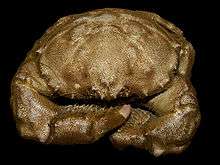
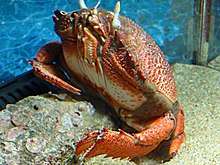
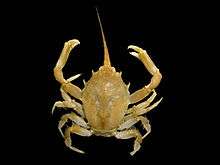
.jpg)
- Section †Callichimaeroida
- †Callichimaeroidea (1†)[38]
- Section Dromiacea
- †Dakoticancroidea (6†)
- Dromioidea (147, 85†)
- Glaessneropsoidea (45†)
- Homolodromioidea (24, 107†)
- Homoloidea (73, 49†)
- Section Raninoida (46, 196†)
- Section Cyclodorippoida (99, 27†)
- Section Eubrachyura
- Subsection Heterotremata
- Aethroidea (37, 44†)
- Bellioidea (7)
- Bythograeoidea (14)
- Calappoidea (101, 71†)
- Cancroidea (57, 81†)
- Carpilioidea (4, 104†)
- Cheiragonoidea (3, 13†)
- Corystoidea (10, 5†)
- †Componocancroidea (1†)
- Dairoidea (4, 8†)
- Dorippoidea (101, 73†)
- Eriphioidea (67, 14†)
- Gecarcinucoidea (349)
- Goneplacoidea (182, 94†)
- Hexapodoidea (21, 25†)
- Leucosioidea (488, 113†)
- Majoidea (980, 89†)
- Orithyioidea (1)
- Palicoidea (63, 6†)
- Parthenopoidea (144, 36†)
- Pilumnoidea (405, 47†)
- Portunoidea (455, 200†)
- Potamoidea (662, 8†)
- Pseudothelphusoidea (276)
- Pseudozioidea (22, 6†)
- Retroplumoidea (10, 27†)
- Trapezioidea (58, 10†)
- Trichodactyloidea (50)
- Xanthoidea (736, 134†)
- Subsection Thoracotremata
- Cryptochiroidea (46)
- Grapsoidea (493, 28†)
- Ocypodoidea (304, 14†)
- Pinnotheroidea (304, 13†)
- Subsection Heterotremata
Cultural influences
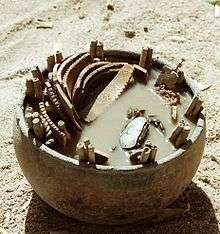
Both the constellation Cancer and the astrological sign Cancer are named after the crab, and depicted as a crab. William Parsons, 3rd Earl of Rosse drew the Crab Nebula in 1848 and noticed its similarity to the animal; the Crab Pulsar lies at the centre of the nebula.[39] The Moche people of ancient Peru worshipped nature, especially the sea,[40] and often depicted crabs in their art.[41] In Greek mythology, Karkinos was a crab that came to the aid of the Lernaean Hydra as it battled Heracles. One of Rudyard Kipling's Just So Stories, The Crab that Played with the Sea, tells the story of a gigantic crab who made the waters of the sea go up and down, like the tides.[42]
The Kapsiki people of North Cameroon use the way crabs handle objects for divination.
References
- Sammy De Grave; N. Dean Pentcheff; Shane T. Ahyong; et al. (2009). "A classification of living and fossil genera of decapod crustaceans" (PDF). Raffles Bulletin of Zoology. Suppl. 21: 1–109. Archived from the original (PDF) on 2011-06-06.
- Henry George Liddell; Robert Scott. "βραχύς". A Greek–English Lexicon. Perseus Digital Library. Retrieved 2010-05-24.
- Henry George Liddell; Robert Scott. "οὐρά". A Greek–English Lexicon. Perseus Digital Library. Retrieved 2010-05-24.
- F. Boßelmann; P. Romano; H. Fabritius; D. Raabe; M. Epple (October 25, 2007). "The composition of the exoskeleton of two crustacea: The American lobster Homarus americanus and the edible crab Cancer pagurus". Thermochimica Acta. 463 (1–2): 65–68. doi:10.1016/j.tca.2007.07.018.
- P. Chen; A.Y. Lin; J. McKittrick; M.A. Meyers (May 2008). "Structure and mechanical properties of crab exoskeletons". Acta Biomaterialia. 4 (3): 587–596. doi:10.1016/j.actbio.2007.12.010. PMID 18299257.
- "Japanese spider crab Macrocheira kaempferi". Oceana North America. Archived from the original on 2009-11-14. Retrieved 2009-01-02.
- Richard von Sternberg; Neil Cumberlidge (2001). "On the heterotreme-thoracotreme distinction in the Eubrachyura De Saint Laurent, 1980 (Decapoda: Brachyura)" (PDF). Crustaceana. 74 (4): 321–338. CiteSeerX 10.1.1.493.6718. doi:10.1163/156854001300104417.
- R. von Sternberg; N. Cumberlidge; G. Rodriguez (1999). "On the marine sister groups of the freshwater crabs (Crustacea: Decapoda: Brachyura)". Journal of Zoological Systematics and Evolutionary Research. 37: 19–38. doi:10.1046/j.1439-0469.1999.95092.x.
- Carrie E. Schweitzer; Rodney M. Feldmann (2010). "The oldest Brachyura (Decapoda: Homolodromioidea: Glaessneropsoidea) known to date (Jurassic)". Journal of Crustacean Biology. 30 (2): 251–256. doi:10.1651/09-3231.1.
- Frederick Schram; Royal Mapes (1984). "Imocaris tuberculata, n. gen., n. sp. (Crustacea: Decapoda) from the upper Mississippian Imo Formation, Arkansas". Transactions of the San Diego Society of Natural History. 20 (11): 165–168.
- J. W. Wägele (1989). "On the influence of fishes on the evolution of benthic crustaceans" (PDF). Zeitschrift für Zoologische Systematik und Evolutionsforschung. 27 (4): 297–309. doi:10.1111/j.1439-0469.1989.tb00352.x. Archived from the original (PDF) on 2011-07-19.
- L. H. Sweat (August 21, 2009). "Pachygrapsus transversus". Smithsonian Institution. Retrieved 2010-01-20.
- Martin J. How; Jan M. Hemmi; Jochen Zeil; Richard Peters (2008). "Claw waving display changes with receiver distance in fiddler crabs, Uca perplexa" (PDF). Animal Behaviour. 75 (3): 1015–1022. doi:10.1016/j.anbehav.2007.09.004.
- Guillermo Guerao; Guiomar Rotllant (2009). "Post-larval development and sexual dimorphism of the spider crab Maja brachydactyla (Brachyura: Majidae)" (PDF). Scientia Marina. 73 (4): 797–808. doi:10.3989/scimar.2009.73n4797.
- Judith S. Weis (2012). Walking Sideways: The Remarkable World of Crabs. Ithaca, NY: Cornell University Press. ISBN 978-0-8014-5050-1. OCLC 794640315.
- Sally Sleinis; Gerald E. Silvey (1980). "Locomotion in a forward walking crab". Journal of Comparative Physiology A. 136 (4): 301–312. doi:10.1007/BF00657350.
- A. G. Vidal-Gadea; M.D. Rinehart; J.H. Belanger (March 2008). "Skeletal adaptations for forwards and sideways walking in three species of decapod crustaceans". Arthropod Structure & Development. 37 (2): 179–194. doi:10.1016/j.asd.2007.06.002. PMID 18089130.
- "Spanner crab Ranina ranina". Fishing and Aquaculture. New South Wales Department of Primary Industries. 2005. Retrieved 2009-01-04.
- A. G. Vidal-Gadea; J. H. Belanger (2009). "Muscular anatomy of the legs of the forward walking crab, Libinia emarginata (Decapoda, Brachyura, Majoidea)". Arthropod Structure & Development. 38 (3): 179–194. doi:10.1016/j.asd.2008.12.002. PMID 19166968.
- Peter K. L. Ng, Danièle Guinot & Peter J. F. Davie (2008). "Systema Brachyurorum: Part I. An annotated checklist of extant Brachyuran crabs of the world" (PDF). Raffles Bulletin of Zoology. 17: 1–286. Archived from the original (PDF) on 2011-06-06.
- "Crab (animal)". Encarta. Microsoft. 2005.
- The Miles Kelly Book of Life. Great Bardfield, Essex: Miles Kelly Publishing. 2006. p. 512. ISBN 978-1-84236-715-5.
- Chris M. C. Woods (1993). "Natural diet of the crab Notomithrax ursus (Brachyura, Majidae) at Oaro, South Island, New Zealand". New Zealand Journal of Marine and Freshwater Research. 27 (3): 309–315. doi:10.1080/00288330.1993.9516571. Archived from the original on 2008-07-08.
- Robin Kennish (1996). "Diet composition influences the fitness of the herbivorous crab Grapsus albolineatus". Oecologia. 105 (1): 22–29. Bibcode:1996Oecol.105...22K. doi:10.1007/BF00328787. PMID 28307118.
- Tracy L. Buck; Greg A. Breed; Steven C. Pennings; Margo E. Chase; Martin Zimmer; Thomas H. Carefoot (2003). "Diet choice in an omnivorous salt-marsh crab: different food types, body size, and habitat complexity". Journal of Experimental Marine Biology and Ecology. 292 (1): 103–116. doi:10.1016/S0022-0981(03)00146-1.
- Danièle Guinot & J.–M. Bouchard (1998). "Evolution of the abdominal holding systems of brachyuran crabs (Crustacea, Decapoda, Brachyura)". Zoosystema. 20 (4): 613–694. Archived from the original (PDF) on 2006-11-18.
- "Global Capture Production 1950–2004". Food and Agriculture Organization. Retrieved 2006-08-26.
- "Stone Crabs FAQs". Retrieved 2012-09-23.
- Lynsey Patterson; Jaimie T.A. Dick; Robert W. Elwood (January 2009). "Claw removal and feeding ability in the edible crab, Cancer pagurus: implications for fishery practice". Applied Animal Behaviour Science. 116 (2): 302–305. doi:10.1016/j.applanim.2008.08.007.
- Queen's University, Belfast (October 10, 2007). "Declawing crabs may lead to their death". Science Daily. Retrieved 2012-09-21.
- Daniel P. Puzo (February 14, 1985) Imitation Crab Draws Criticisms. Los Angeles Times
- David Adam (February 8, 2005). "Scientists say lobsters feel no pain". The Guardian.
- "Crabs 'feel and remember pain' suggests new study". CNN. March 27, 2009.
- Robert W. Elwood; Mirjam Appel (2009). "Pain experience in hermit crabs?" (PDF). Animal Behaviour. 77 (5): 1243–1246. doi:10.1016/j.anbehav.2009.01.028. Archived from the original (PDF) on 2012-04-26.
- Joel W. Martin; George E. Davis (2001). An Updated Classification of the Recent Crustacea (PDF). Natural History Museum of Los Angeles County. p. 132.
- M. de Saint Laurent (1980). "Sur la classification et la phylogénie des Crustacés Décapodes Brachyoures. II. Heterotremata et Thoracotremata Guinot, 1977". Comptes rendus de l'Académie des sciences. t. 290: 1317–1320.
- Jérôme Chablais; Rodney M. Feldmann; Carrie E. Schweitzer (2011). "A new Triassic decapod, Platykotta akaina, from the Arabian shelf of the northern United Arab Emirates: earliest occurrence of the Anomura" (PDF). Paläontologische Zeitschrift. 85: 93–102. doi:10.1007/s12542-010-0080-y.
- Luque, J.; Feldmann, R. M.; Vernygora, O.; Schweitzer, C. E.; Cameron, C. B.; Kerr, K. A.; Vega, F. J.; Duque, A.; Strange, M.; Palmer, A. R.; Jaramillo, C. (24 April 2019). "Exceptional preservation of mid-Cretaceous marine arthropods and the evolution of novel forms via heterochrony". Science Advances. 5 (4): eaav3875. doi:10.1126/sciadv.aav3875. PMC 6482010.
- B. B. Rossi (1969). The Crab Nebula: Ancient History and Recent Discoveries. Center for Space Research, Massachusetts Institute of Technology. CSR-P-69-27.
- Elizabeth Benson (1972). The Mochica: A Culture of Peru. New York, NY: Praeger Press. ISBN 978-0-500-72001-1.
- Katherine Berrin; Larco Museum (1997). The Spirit of Ancient Peru:Treasures from the Museo Arqueológico Rafael Larco Herrera. New York: Thames and Hudson. p. 216. ISBN 978-0-500-01802-6.
- Kipling, Rudyard (1902). "The Crab that Played with the Sea". Just So Stories. Macmillan.
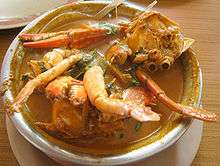

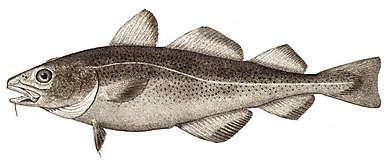
.png)
